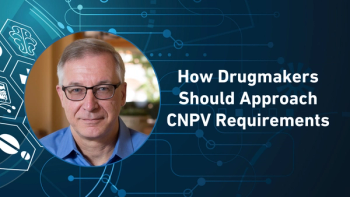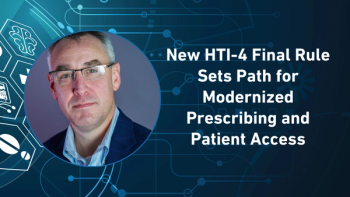
Bridging the Divide: Understanding Contrasting Approaches in Drug Development
Analyzing the divergent paths undertaken by small biotech and large pharma companies in drug development.
Drug development is a multifaceted journey requiring substantial investments of time, resources, and expertise. Biotech’s and large pharma entities are integral to ushering novel therapies from conception to commercialization.
However, their approaches diverge significantly due to varying organizational structures, financial capacities, and risk tolerance. These discrepancies often pose challenges when collaboration is sought.
Additionally, differences extend beyond clinical development to CMC timelines and development, emphasizing the need for a holistic understanding of the industry landscape's disparities. This article comprehensively analyzes the divergent paths undertaken by small biotech and large pharma companies in drug development.
Phase Appropriateness and Risk-Based Approaches
Biotech’s thrive in a high-risk, high-reward environment where a single drug candidate's delay in clinical dosing can be transformative. Embracing agility and adaptability, biotech’s employ risk-based methodologies to navigate evolving scientific and regulatory terrains.
They have a sound understanding of the science and proceed into clinical development with a phase-appropriate risk approach, which has been encourage by regulatory bodies through their issuance of guidance’s1 that ensures patient safety while limiting financial spending. They prioritize niche therapeutic areas and innovative compounds, allocating resources efficiently toward early-stage research and proof-of-concept studies. This stage-gating approach prioritizes meticulous spending, maximizing returns while mitigating financial risks and generating appropriate scientific data to make important risk-based and phase-appropriate decisions.
Conversely, large pharma corporations adopt a risk-averse stance, fortified by extensive investments in established brands and therapeutic portfolios. Rigorous due diligence, preclinical testing, and robust clinical trial protocols underscore their risk management strategies.
Leveraging broad portfolios and financial prowess, pharma entities engage in later-stage clinical trials informed by comprehensive evaluations of a drug candidate's clinical profile and market dynamics. The emphasis lies on strategic decision-making to optimize resource allocation and minimize risks across diverse assets.
CMC Development: Contrasting Approaches
In addition to clinical development disparities, variances in CMC development further underscore the dichotomy between small biotechs and large pharma. Constrained by resources, small biotechs often rely on tying development to clinical events, which enable additional funding to be secured and used to advance the drug further toward commercialization.
This approach frequently leaves companies after a Phase I clinical study with very basic formulations not yet ready for commercialization. Agile and iterative approaches characterize their CMC strategies, emphasizing scalability and flexibility to accommodate evolving clinical data and regulatory feedback. They have detailed development plans with crucial decision points that aid in navigating complexities while maximizing asset value.
Prior to the company showing safety and exposure in Phase I clinical studies the focus for CMC development was on supplying material to enable the IND as quickly and cost-effectively as possible while ensuring patient safety. Often, only a single batch of API or drug product have been made for first in human studies; therefore, most of the development aimed at commercial success is done between Phase I and Phase II.2
Here, the small biotech’s strive to establish more commercially viable GMP manufacturing processes of the API as they produce additional batches and have more robust data sets. Specifications are finalized and critical attributes are identified but not finalized. Similarly, formulation development begins in earnest now that there is a better picture of the theoretical therapeutic dose based on human exposure.
The CMC team, in conjunction with clinical and commercial teams, begins to work toward a commercial target product profile that guides their development. The desire is to have a formulation that is close to final but allows for flexibility in clinical dosing.
In contrast, large pharma entities boast extensive internal research and manufacturing capabilities, as well as great financial resources and flexibility enabling greater control over CMC processes. Often, the API manufacturing process is already commercially viable, and the critical product attributes are already set and understood prior to Phase I as multiple batches have already been manufactured. They have ample drug substances to do extensive formulation work.
Investments in cutting-edge facilities and robust quality management systems underscore their commitment to product integrity and regulatory compliance. Embracing conservative methodologies, pharma corporations prioritize rigorous process validation and risk mitigation strategies allowing them to terminate projects early based on how the new compound fits within the current landscape of the market complemented by continuous manufacturing technologies for enhanced efficiency and cost-effectiveness which could reduce cost of goods and increase profit margins once the drug is approved.
Conclusion
The contrasting approaches in drug development between small biotechs and large pharma entities reflect their unique organizational dynamics, financial landscapes, and risk profiles. While both approaches are viable, understanding these nuances is pivotal for fostering collaboration and driving innovation in the pharmaceutical industry.
By recognizing and leveraging the strengths of each approach, stakeholders can navigate the drug development landscape more effectively, ultimately advancing novel therapies to address unmet medical needs and improve patient outcomes which is everyone’s goal.
About the Author
Ray Forslund, PhD, MBA, Senior VP of Pharmaceutical Development at Syner-G BioPharma Group. joined Syner-G in 2016 to establish and grow the company’s technical capabilities. With more than 20 years’ experience and broad proficiency in the pharmaceutical world, he possesses an especially extensive command of cGMP, regulatory, and QA requirements across small molecules, peptides, biologics, and personalized medicine.
References
1. Current Good Manufacturing Practice for Phase 1 Investigational Drugs. FDA guidance document. Updated August 24, 2018.
2. Krishnasarma pathy. Considerations for Successful Scale-Up to Tox Batches and Phase-Api (Bulk Drug substance). Biomedical. NLM ID: 101723284. OCoLC: 999826537. LCCN: 2017202541. Published August 29, 2018.
Newsletter
Stay ahead in the life sciences industry with Pharmaceutical Commerce, the latest news, trends, and strategies in drug distribution, commercialization, and market access.





